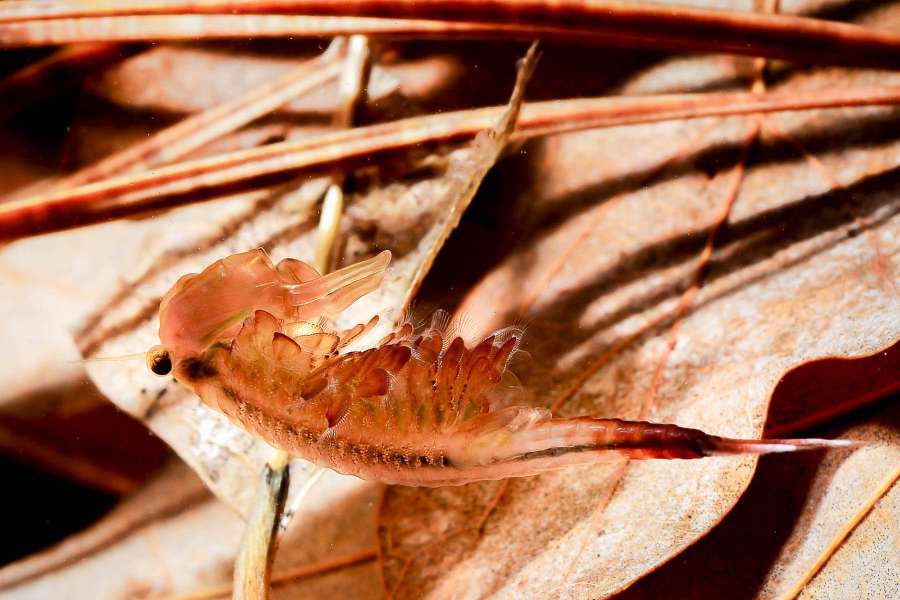Tiny crustaceans in their transient ponds

Looking to get out into the woods? Spring is the perfect time of year to explore vernal pools: ephemeral forest ponds, blanketed in leaves from a healthy forest, that appear when they’re fed by melting snow, rain or groundwater. These pools only stay wet for about seven months out of the year, but in that time, they host a wealth of animals.
Vernal pools don’t support any fish, making them the perfect place for amphibians to lay their eggs. You can hear wood frogs and spring peepers or see yellow spotted salamanders wriggling among the leaves. If you look closely, you might see tiny fairy shrimp, cousins of the commercial pet Sea-Monkeys.
Fairy shrimp (Eubranchipus vernalis) spend most of their time along the bottom of their pools where they scrape up their food of algae and amoebas. The shrimp swim slowly, belly-side up, using their ten pairs of leg-like appendages to move.
Their lives are as fleeting as the pools they call home. Fairy shrimp mate in April or May and then release their eggs into the water. The males die shortly after mating, while the females die when the pool inevitably dries up in the following weeks. The eggs lie dormant through the dry months, waiting to hatch until the pool fills again.
Areas that house vernal pools are often vulnerable to development. By conserving lands, we can provide an oasis for these ephemeral ponds—and the species that depend on them.
Learn more about fairy shrimp and other unique critters in our Field Guide.

Comments
There are no comments.
Thank you!
Your comment has been received. Before it can be published, the comment will be reviewed by our team to ensure it adheres with our rules of engagement.
Back to recent stories